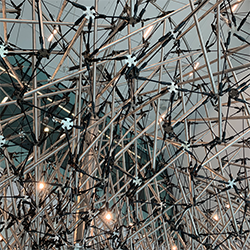In a world of misinformation, is more science enough? I’m thinking this as I arrive at Melbourne’s Science Gallery in its meandering space on Swanston Street at the University of Melbourne.
I’ve come to hear experts from the Australian Radiation Protection and Nuclear Safety Agency (ARPANSA) attempt to counter the spread of misinformation about health risks posed by new 5G technologies - in particular - mobile phone towers exposing us to electromagnetic energy (EME) in the form of non-ionising radiation. The very wireless telecommunication technology that makes modern society possible, has also enabled the rapid spread of misleading health scares.
“Our scientists will discuss the evidence which shows us that there is no reason to worry”, is how ARPANSA describes what’s coming up.
I’ve arrived a little early so first I check out the Gallery’s SWARM exhibition which “explores what it means to be a pack animal like us”. SWARM’s collaborative exhibits and projects encourage us to reflect on our role in the collective. Will we go it alone? Or join the swarm? I am yet to realise how apt this theme is to what I am about to hear.
I’m swept into both an imaginative and real world of shark scent at Ai Hasegawa’s Human x Shark exhibit: some challenging smells, some provocative thoughts. A wall of videos catch my attention. Sliding across I also see a glass covered model of Julijonas Urbonas’ Euthanasia Roller Coaster. This, and the accompanying video demonstration and discussion, are both challenging and confronting - it holds me deep in thought.
Realising the time, I mentally shake myself off and head to the open speaker space at the centre of the gallery. Ah yes, a more familiar setting - eager scientists out front ready to present their power-points to “the public” sitting on the dimly-lit, raked seating.
We’re here to learn about EME, how it’s measured, how much we’re generally exposed to, why it is not a health risk and how the misinformation around it can be more harmful than EME itself.
ARPANSA already runs a well-used, public ‘Talk to a scientist’ Call Centre. Since 2017, from over 1000 enquiries, half of the calls have focussed on people’s concerns about radio frequency (RF) exposure from new 5G technology-enabled towers despite the fact that these present much lower health risks than say, ultraviolet radiation from the sun or workplace exposures.
Why this rise in calls about 5G? It correlates directly with the emergence of online misinformation campaigns about the supposed risks from greater exposures to these towers. So ARPANSA aims to counteract this with some outreach of their own.
First we meet ARPANSA’s friendly, earnest, diverse EME team. They appear worthy of our trust. Survey after survey of community attitudes to science find that people want to hear directly from the scientists, not from ‘spin doctors’. This high level of trust enjoyed by scientists is invaluable, so it’s great to see the team show up ready to explain, discuss, debate.
The team monitors any new research into health effects of EME and update all safety standards for public and industrial exposures, assesses exposure out in the community, conducts their own research, provides accurate information to the public, engages with global experts to stay up to date and upgrades their own facilities to improve services.
There are 50 sites across Melbourne where RF is measured from all sources of non-ionising radiation: radio, television, pagers, mobile phone towers, smart meters, cordless phones and wifi. Taking one site at Yallambie, we see data from 2013 and 2023. Despite the changing technologies - mostly 3G (plus some 2G and 4G) in 2013 and mostly 4G (plus some 3G and 5G) by 2023 - during that 10 year period, measurements have remained well below (0.0095%) internationally accepted ‘safe’ limits of exposure. Interestingly, in the world of risk allocation, other cancer-causing agents carrying the same risk level as exposure to RF include aloe vera (intestinal cancer), talcum powder (ovarian cancer), and pickled vegetables (stomach cancer).
Is this enough to satisfy us? A National Institute of Health graph from 2007 depicts the rise in cigarette smoking from 1900 to 1940 and 20 years after, from 1920-1960, showing an alarmingly similar rate of rise in lung cancers. Are we going to see a similar rise in RF-related cancers in 20 years time? Will the towers be responsible or is it more likely to be from our mobile phones which we all clutch close to our bodies these days? Do we ask fewer questions about them because no-one is yet to create such a concerted campaign against them like has been created around mobile towers?
Given that mobile phones have only become commonplace in the last 15-20 years, researchers are only now able to observe any long-term negative effects. We would all like to know if they will cause brain cancer. Cellular studies haven’t been able to conclude this, nor have animal studies. Deliberately testing humans is ethically fraught, but we can play catch up with epidemiological studies and yet any response from a brain tumour patient being asked about their phone usage may be confounded by their disease.
This is a lot to digest, and I’m somehow reassured by the team’s frank assessment of the realities around this topic. To them, all iterations of mobile phones have relied on RF and 5G is just another technology delivering greater reach for mobile phones, but still operating within safe levels compared say with the much greater risks posed to us from ionising radiation exposure in some workplaces or through sun exposure.
The wicked campaign to demonise 5G tower technology capitalised on a natural fear we all have about new technologies but then expanded into a range of conspiracy theories which stuck. How an agency charged with responsibility to keep us safe is to engage with such mischief is difficult. We are entitled to criticise new technologies and to ask responsible agencies how they are protecting us but this campaign's deceit might need more than facts to counteract its impact.
Two weeks after this event I heard Professor David Goodman from the University of Melbourne talking about the proliferation of pamphlets in the nineteenth century and it's similarity with today’s social media explosion. Citizens in a healthy democracy will always need access to reliable information sources, confidence to filter out misinformation and willingness to engage our politicians to deal with their concerns. Adopting the deficit model - or just plain old straight-talking - in this instance seems entirely appropriate.
ARPANSA has since launched a new website. From a quick review of the Google queries people make about radiation, most of them are sensibly covered on this site. I know I am glad this Government agency exists and am reassured as much by their personal and professional presence as I was by the content of this talk.
ARPANSA’s plan to roll out this presentation to the community is good. Evaluation of participants’ experiences of each event, along with ongoing evaluation of calls to the enquiry line, should inform future communication plans.
This presentation addressed how groups can be mobilised by their fear of the unknown. And reflecting on that part of the presentation I recall the powerful impact the Euthanasia Coaster exhibit at SWARM had on me. This exhibit held my attention, had me musing about end-of-life choices, the science and technology enabling these and how we as a society will navigate them in future.
Could ARPANSA’s communication plan also include working with exhibit creatives connected to Science Gallery to design and/or host a more confronting exhibition through which more reluctant skeptics might explore their thoughts and fears?
I’m reminded of a time I was asked to give a birthday speech. A friend suggested that I not talk about the person there today, rather project into the future - say 20 years - and describe the person we see before us. Years later I was involved with a campaign to stop a thoroughfare going through our neighbourhood and a clever campaigner used this same technique - asking those present to imagine what their future will look like in 20 years time if it went ahead. Twenty years seems a good measure. An engaging exhibit inviting people to explore, imagine and manage their fears for the future or empower them to ask more from their government would further enrich ARPANSA's community engagement program.
_________________________________________________________
Further reading: The lure of rationality: Why does the deficit model persist in science communication? Simis, M. J., Madden, H., Cacciatore, M. A., & Yeo, S. K. (2016). The lure of rationality: Why does the deficit model persist in science communication? Public Understanding of Science, 25(4), 400–414. https://doi.org/10.1177/0963662516629749
_________________________________________________________
Event details for “Misinformation”
Two one-hour presentations were held on 17 August 2022, from 1:30-2:30pm & 3-4pm
Organised by ARPANSA’s Communications team, contact: David Sibenaler, media@arpansa.gov.au. This presentation is available for other community venues so contact David to invite the team to present your at community event.
The choice of Science Gallery Melbourne, right on the Swanston Street tramline at the University of Melbourne, is welcome. With the aim to involve, inspire and transform curious minds (primarily aged 15-25 years) through arts and science, it is an exciting new event space. And it’s good to see the space being made available for this free event even though it’s not curated by the Gallery.
Making the event part of Australia’s National Science Week helps ARPANSA tap into the national attention focussed on Australia’s largest national festival and our annual celebration of science and technology. It features more than 1000 events around Australia during August, including those delivered by universities, schools, research institutions, libraries, museums and science centres. Politicians love it, families get involved and science enthusiasts get a chance to see the things that excite and interest them being celebrated and talked about across the community.


